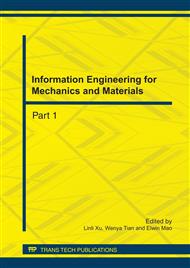p.1046
p.1051
p.1055
p.1060
p.1065
p.1070
p.1075
p.1081
p.1086
The Optimization of Braking Force Distribution Control Strategy for ESP System
Abstract:
To adjust the car yawing moment through specific wheels braking is a kind of widely used method by various auto stability control system. The braking of different wheels will have different effects on direction and the size of the car yawing moment. Based on the established simulink simulation model platform of automobile Electronic Stability Program (ESP) control system, this paper makes a research and analysis on the vehicle stability in five kinds of typical working conditions under three kinds of braking force distribution control strategies. Finally, we propose an optimized braking force distribution control strategy which is determined by the road condition.
Info:
Periodical:
Pages:
1065-1069
Citation:
Online since:
July 2011
Authors:
Keywords:
Price:
Сopyright:
© 2011 Trans Tech Publications Ltd. All Rights Reserved
Share:
Citation:


